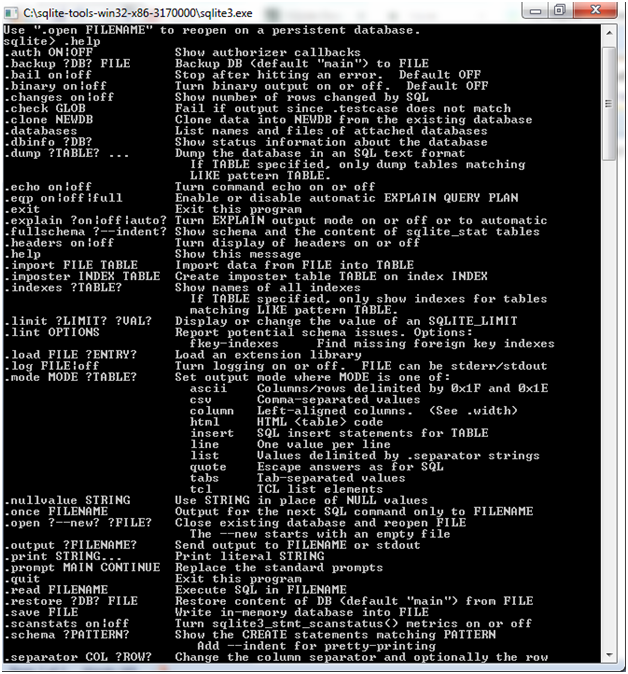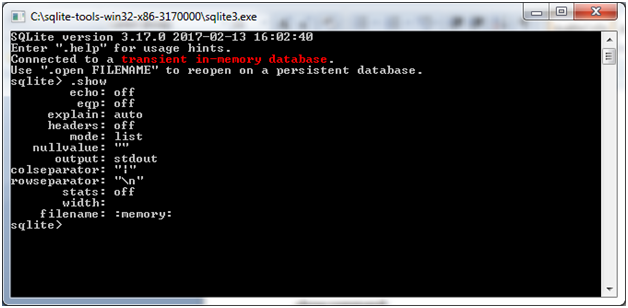-
SQLite Tutorial
- sqlite-tutorial
- sql-vs-sqlite
- sqlite-history
- sqlite-features
- sqlite-advantages
- sqlite-installation
- sqlite-commands
- sqlite-syntax
- sqlite-data-types
- sqlite-operators
- sqlite-expressions
Databases
Table
CRUD Operation
Clauses/Conditions
- sqlite-where
- sqlite-and
- sqlite-or
- sqlite-like
- sqlite-glob
- sqlite-limit
- sqlite-order-by
- sqlite-group-by
- sqlite-having
- sqlite-distinct
- sqlite-union
- sqlite-union-all
SQLite Joins
SQLite Date & Time
- sqlite-date-and-time
- sqlite-date()
- sqlite-datetime()
- sqlite-juliandday()
- sqlite-now()
- sqlite-strftime()
- sqlite-time()
Aggregate Functions
SQLite Triggers
SQLite Keys
SQLite Import/Export
Connectivity
Interview Questions
SQLite CommandsSQLite commands are similar to SQL commands. There are three types of SQLite commands:
Data Definition LanguageThere are three commands in this group: CREATE: This command is used to create a table, a view of a table or other object in the database. ALTER: It is used to modify an existing database object like a table. DROP: The DROP command is used to delete an entire table, a view of a table or other object in the database. Data Manipulation languageThere are three commands in data manipulation language group: INSERT: This command is used to create a record. UPDATE: It is used to modify the records. DELETE: It is used to delete records. Data Query LanguageSELECT: This command is used to retrieve certain records from one or more table. SQLite dot CommandFollowing is a list of SQLite dot commands. These commands are not terminated by a semicolon (;). .help command: Check the list of dot commands by using the ".help" at anytime. For example:  The above are the list of various important SQLite dot commands. See these commands with description in the following table:
.show command: You can use the .show command to see default setting of for your SQLite command prompt.  Note: Don't put space between sqlite> prompt and dot command, otherwise it will not work.Special dot commandsThere are some dot commands which are used to format your output. These commands are: .header on .mode column .timer on Next TopicSQLite Syntax
|